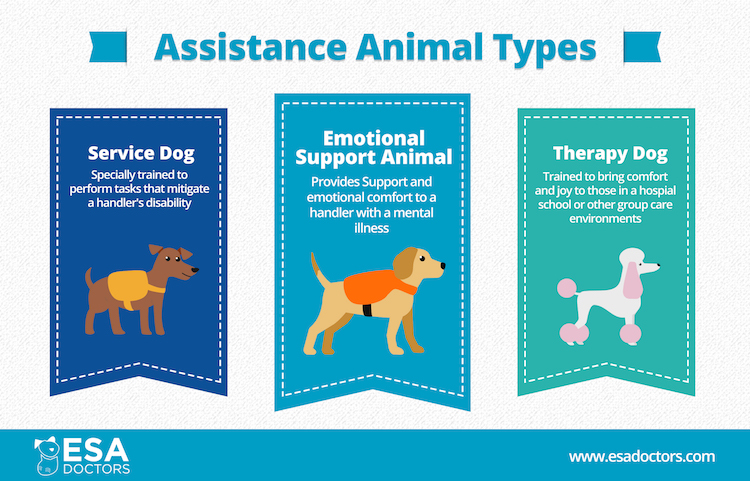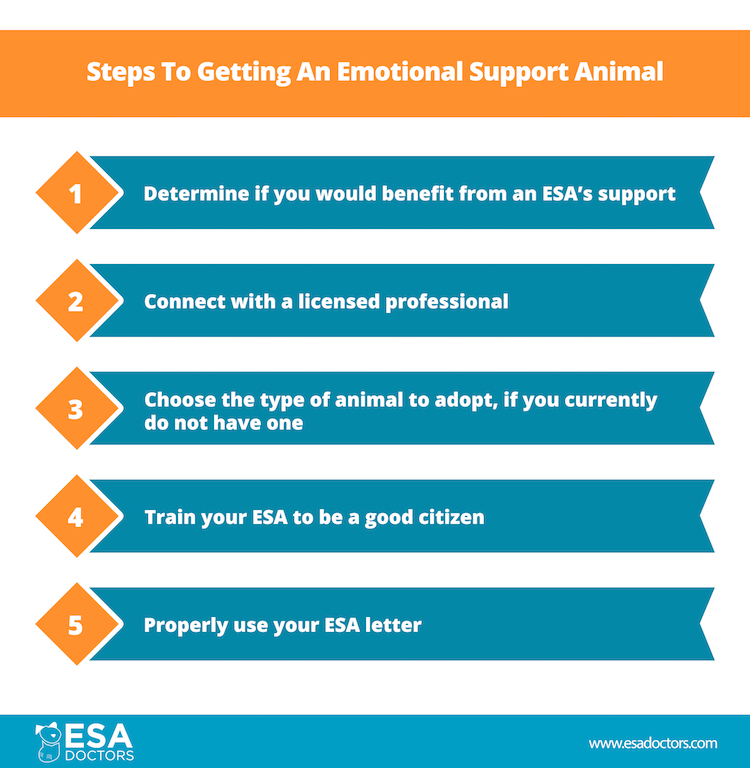According to the Centers for Disease Control (CDC), about 1 in 36 children in America are diagnosed with autism. Most children are diagnosed with autism around four, though some are diagnosed as early as age 2. As these children grow up, transitioning from a school environment into adulthood can be challenging, as services for adults with autism can be sparse. Many people with autism do not get the appropriate care they need. In this article we’ll explore the growing trend of children and adults with autism using dogs to alleviate symptoms of their condition.
Connect online with a licensed health professional for an ESA letter.

How Dogs Can Help Those with Autism (Quick Links)
- Canine Calming Abilities
- Safety and Tracking
- Stopping Repetitive Behaviors
- Emotional Support Animals for Autism
- Sleep Assistance
- Social Interaction
The Full Spectrum of Autism
Individuals with autism can also have a number of behavioral or mental health problems:
- 11 to 40% suffer from anxiety disorders.
- About 30% are non-verbal, which can increase their frustration when communicating with others.
- Almost 50% tend to wander away or bolt unexpectedly from their caregivers.
- Also, 50% experience chronic sleep problems.
- And depression occurs in 7% of autistic children and 26% of autistic adults.
As these numbers indicate, children and adults with autism have many challenges to overcome. New developments have provided autistic children and their caregivers some creative help, in the form of dogs.

Canine Caregivers for Individuals With Autism
Research demonstrates that dogs provide humans with health benefits like decreasing blood pressure and anxiety levels, improving social skills, and providing companionship. However, they give a special kind of care to people with autism.
More and more studies indicate the positive impact dogs make in an autistic individual’s life. Whether the dog is a family pet, an emotional support animal, or a therapy dog, dogs affect an autistic person’s life in both functional and emotional ways. Dogs are so effective in helping people with autism and their caregivers that Autism Speaks —the largest autism advocacy organization in America— includes an entire section on their site devoted to dogs and their benefits for autistic people.
Research has shown that dogs help increase social skills, foster independence, instill confidence, and teach assertiveness over aggression. Children who have a dog tend to introduce themselves more often, engage in asking for information, and are more adept at continuing a conversation.
Because autism occurs on a broad spectrum, each child has a unique set of needs. And dogs can cater to a wide variety of needs. The following are a few ways dogs can help people with autism.

1. Canine Calming Abilities
An autism service dog is formally trained to provide specific tasks that help during an outburst or meltdown for an autistic person and caregiver. Dogs offer a physical, tangible form of emotional support. They can lean up against a child or lie on a child’s lap. An autism assistance dog can even respond to the sound of crying and provide snuggles and comfort until the crying settles down. As a service dog, the canine is also allowed access to public areas not typically accessible to other animals.
2. Safety and Tracking
Many autistic children tend to wander away or bolt from their parents. When this occurs in a public area, it can be frightening and frustrating. An autistic child can find themselves in an unsafe predicament—in the middle of traffic, lost in a crowded area, or a pool or body of water—and unable to find their way back to their caregivers. Autism assistance dogs can be trained to track a child to help find them and to alert caregivers if a child wanders away.
3. Stopping Repetitive Behaviors
Autistic children may exhibit repetitive behaviors such as banging their heads on a wall or pacing back and forth. Autism assistance dogs can help stop repetitive behaviors by giving a child a prompt to stop, like nudging them or licking them, or informing a caregiver. It’s important to note that although autism assistance dogs have exceptional instincts, they aren’t human and must be trained to differentiate between harmful repetitive behaviors and harmless ones.
4. Emotional Support Animals for Autism
Dogs can also be emotional support animals (ESAs), which are different from service dogs. Autistic children who may not need the level of care an Autism Support dog provides can benefit from an ESA.
An ESA does not have to be specially trained to perform a task, however an emotional support dog provides unconditional love and a sense of calm to a person with autism just through its presence.
5. Sleep Assistance
Emotional support dogs can help people with autism to sleep at night. Having a warm and attentive dog nearby can provide a child or adult enough comfort to fall asleep.
6. Social Interaction
Autistic children may have difficulty initiating social interaction with their peers. Emotional support dogs provide that bridge by drawing attention from others, requiring an autistic child to be social and answer questions. The more often autistic children interact with others, the more comfortable they will be in social situations.

Emotional Support Dogs and Autism
Because autism occurs on a wide spectrum, it’s vital to assess the level of care an autistic individual requires. Some autistic children will not need the level of interventions that a fully trained autism assistance dog can provide. While others can benefit from the presence and comfort of an emotional support dog. Most importantly, it’s good to know that dogs, in general, can give an autistic individual love, support, and an endless supply of dog hugs that may just offer some relief to their condition.






Leave a Comment